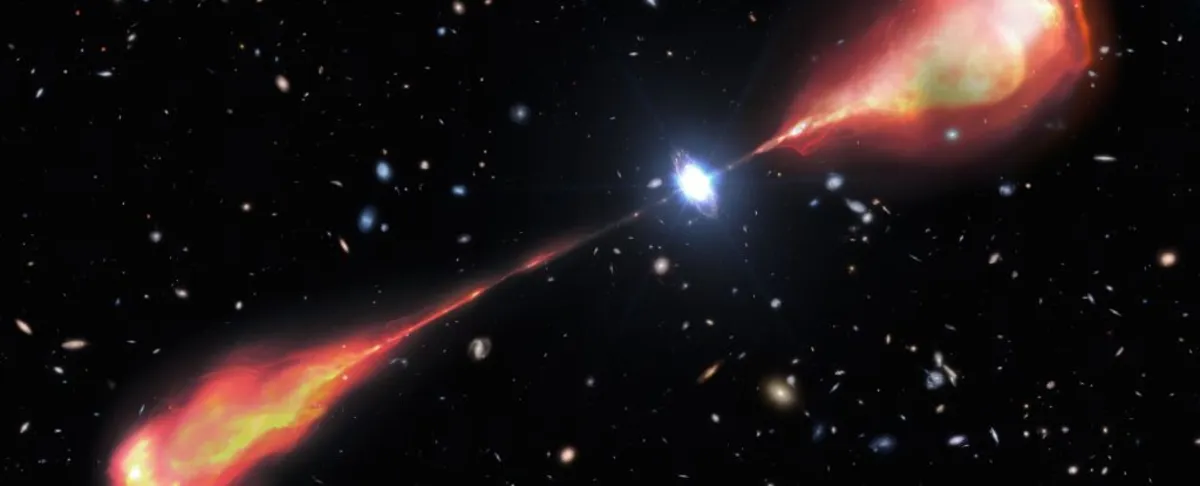
A remarkable discovery has been made regarding a supermassive black hole located in the early Universe. This black hole has been observed emitting powerful jets of plasma that extend over an astonishing distance, measuring at least twice the width of the Milky Way galaxy. The host galaxy of this black hole is identified as a quasar named J1601+3102, and it is being observed as it existed less than 1.2 billion years after the Big Bang.
The jets produced by this quasar span an impressive 215,000 light-years from one end to the other, making it the largest structure of its kind recorded during the formative stages of the Universe. This significant finding has the potential to provide insights into the growth and development of supermassive black holes. As noted by astrophysicist Anniek Gloudemans from the National Science Foundation's NOIRLab, the search for quasars with strong radio jets in the early Universe is crucial for understanding the origins of these jets and their influence on galaxy evolution.
Jets represent a fascinating behavior exhibited by supermassive black holes. When there is sufficient material in close proximity to a black hole, it spirals inward, creating a disk of matter. This disk, fueled by the intense gravitational forces of the black hole, leads to the formation of a quasar, which radiates light as the material is heated to millions of degrees due to friction and gravity. Interestingly, not all of this material is consumed by the black hole; some are redirected along magnetic field lines that extend beyond the event horizon, accelerating towards the black hole's poles and being expelled into space at incredible speeds. These outflows result in jets that can travel vast distances across the cosmos.
The longest jets previously recorded measure approximately 23 million light-years, found in a much later period of the Universe's timeline. However, these jets primarily emit radio waves, which complicates their visibility. To identify the quasar J1601+3102, Gloudemans and her team utilized a combination of observations from several telescopes, including the Low Frequency Array (LOFAR) Telescope in Europe, Gemini North in Hawaii, and the optical Hobby-Eberly Telescope in Texas. The data collected from these observations not only illuminated the extensive reach of J1601+3102's jets but also enabled researchers to analyze the black hole itself.
By examining the light emitted from the quasar's activity, scientists can estimate the mass of the black hole. In this case, J1601+3102 has a mass of approximately 450 million times that of the Sun, which is considered a relatively modest size for a quasar black hole. Furthermore, it is not consuming matter at an exceptionally high rate, indicating that the properties of quasars may be more diverse than previously thought. Gloudemans highlights the intriguing aspect that the quasar fueling this massive radio jet does not possess an extraordinarily large black hole mass compared to other known quasars, suggesting that powerful jets can be generated without an exceptionally massive black hole or a high accretion rate in the early Universe.
This discovery opens up new avenues for research into the formation and evolution of supermassive black holes in the early Universe. Understanding the mechanisms behind jet formation and the relationship between black hole mass and quasar activity can provide valuable insights into the evolution of galaxies and cosmic structures. As astronomers continue to explore the depths of the Universe, findings like those surrounding J1601+3102 will enhance our comprehension of the cosmos and its history.